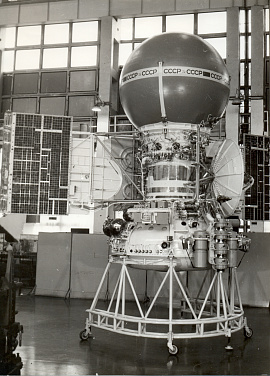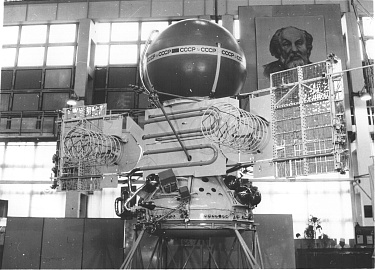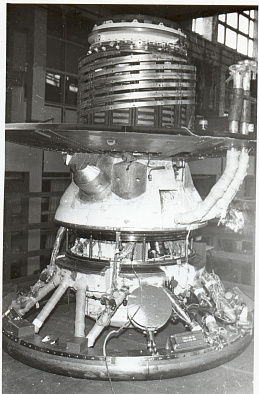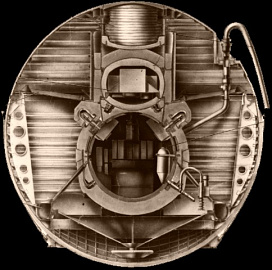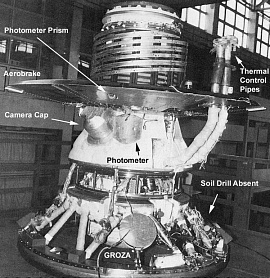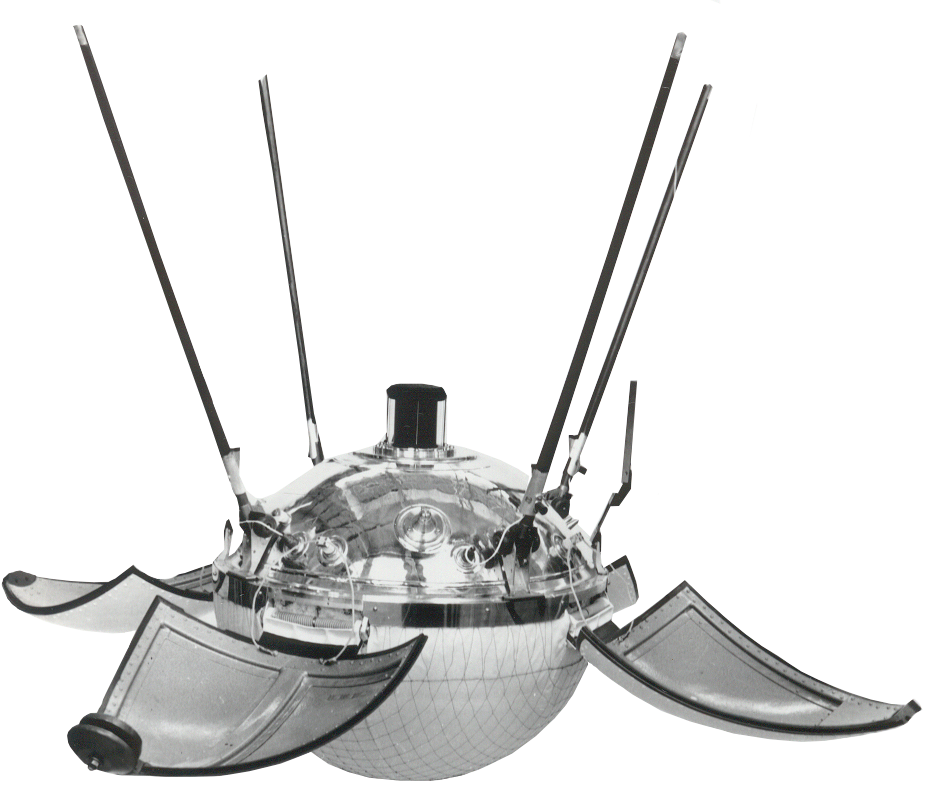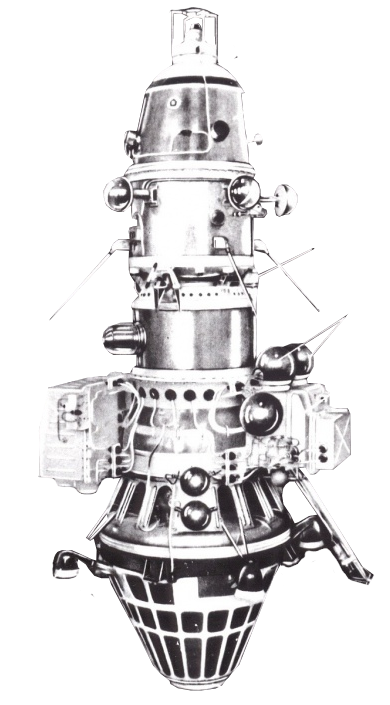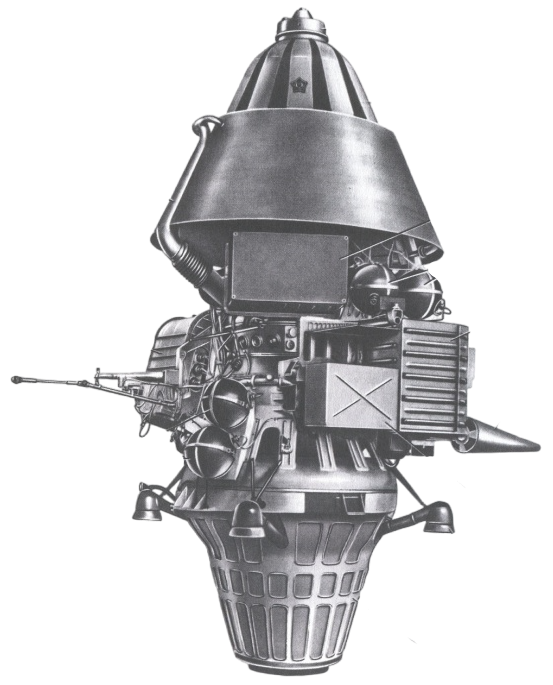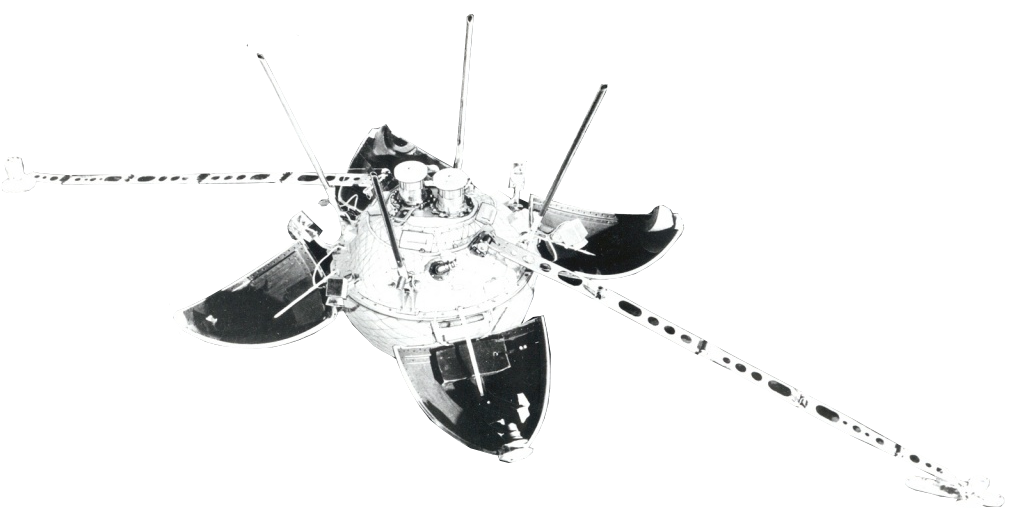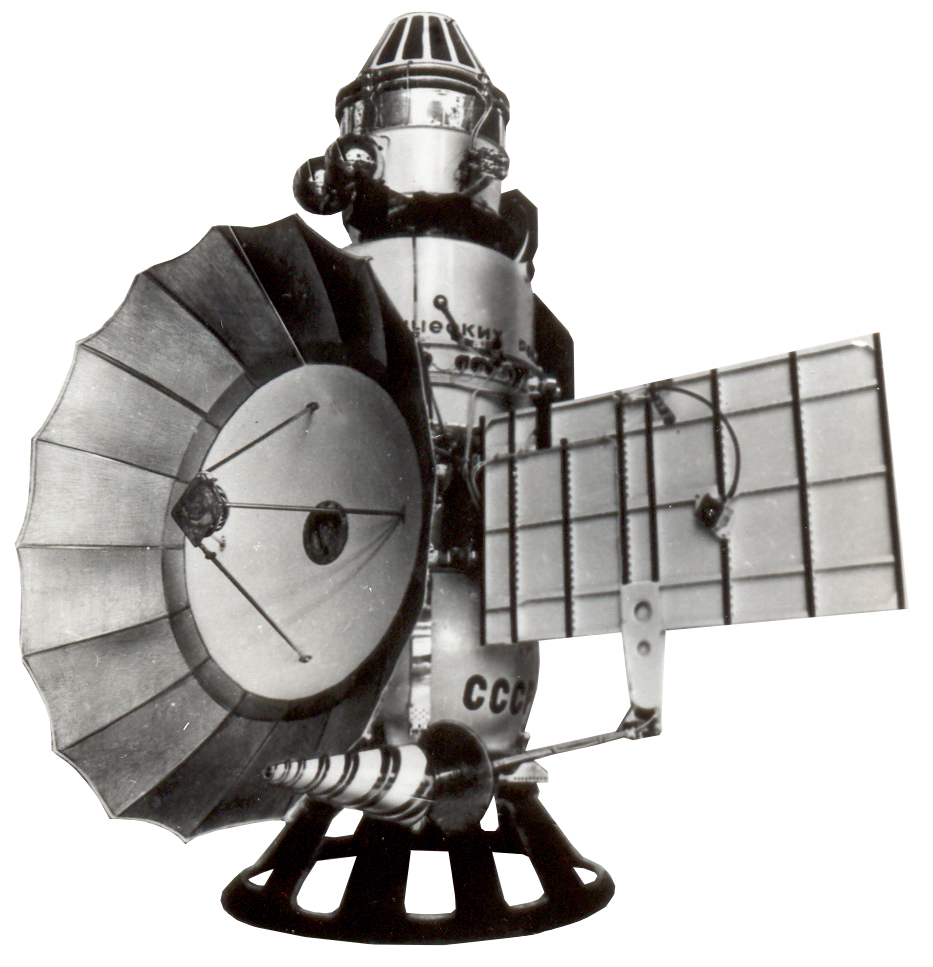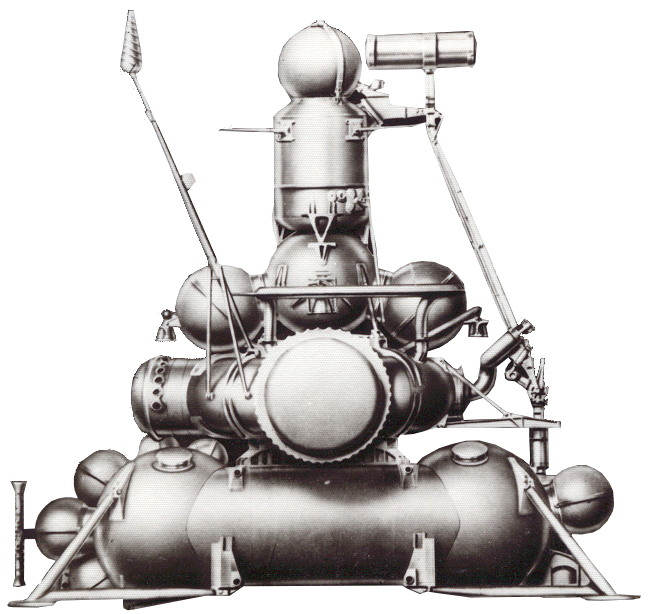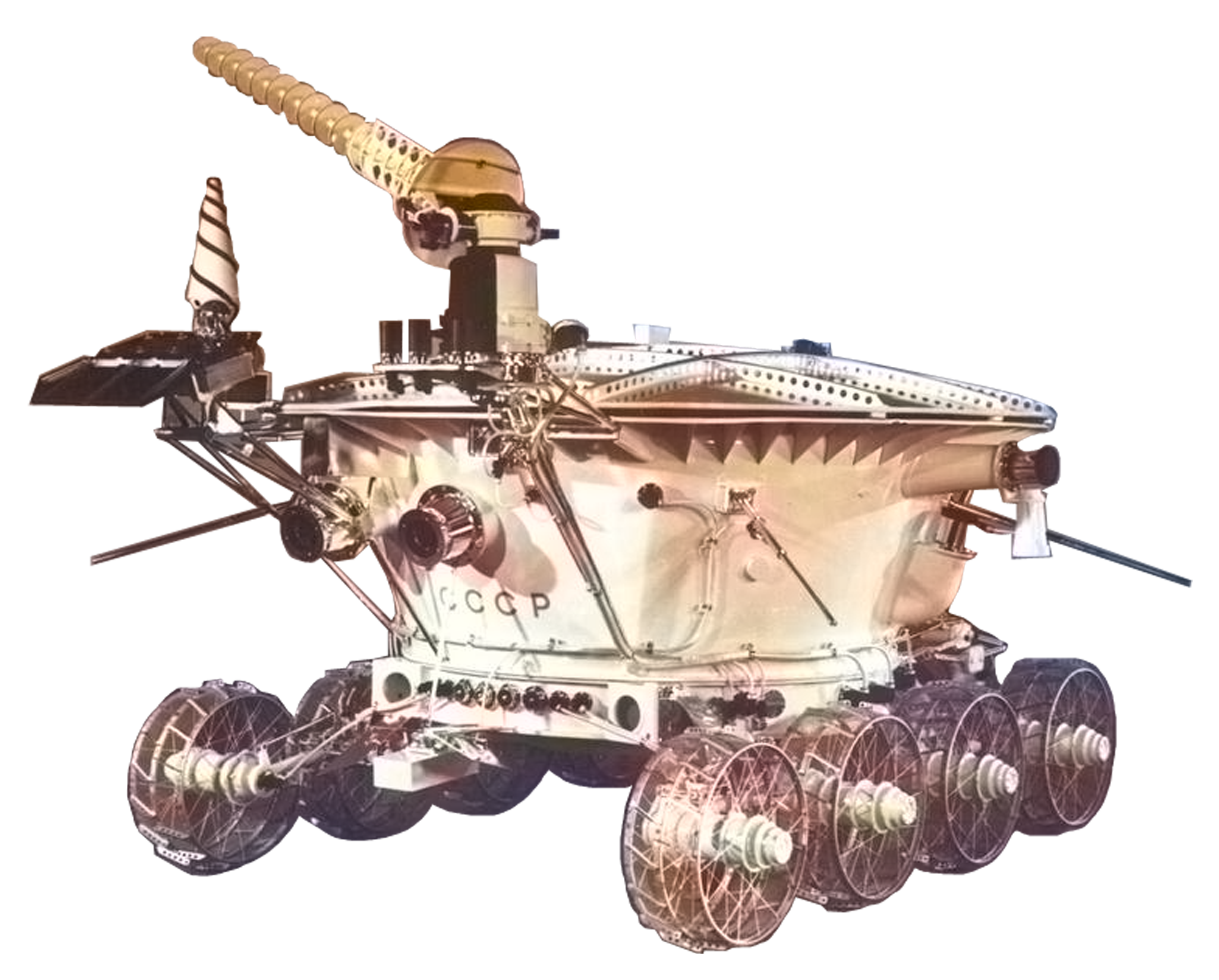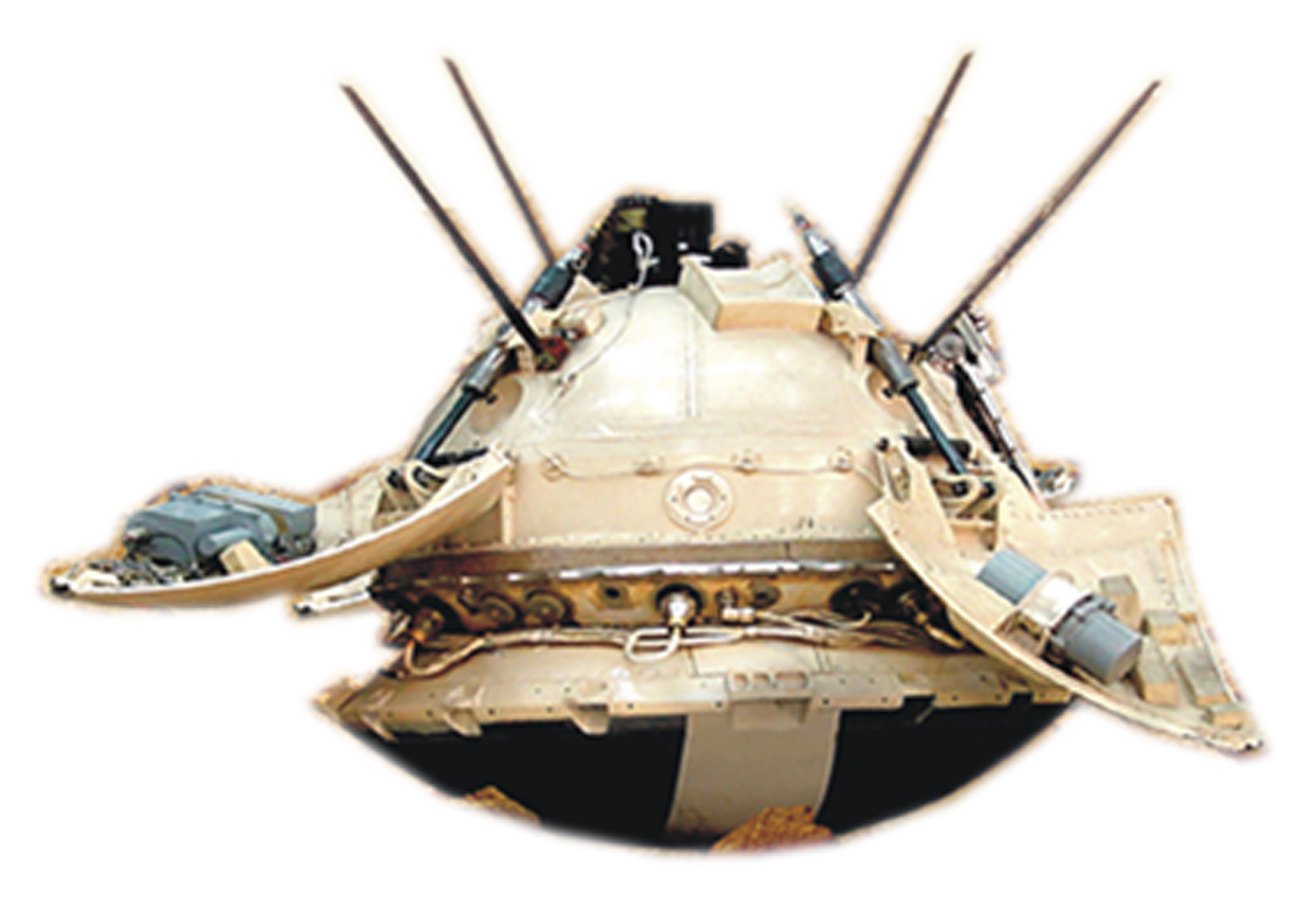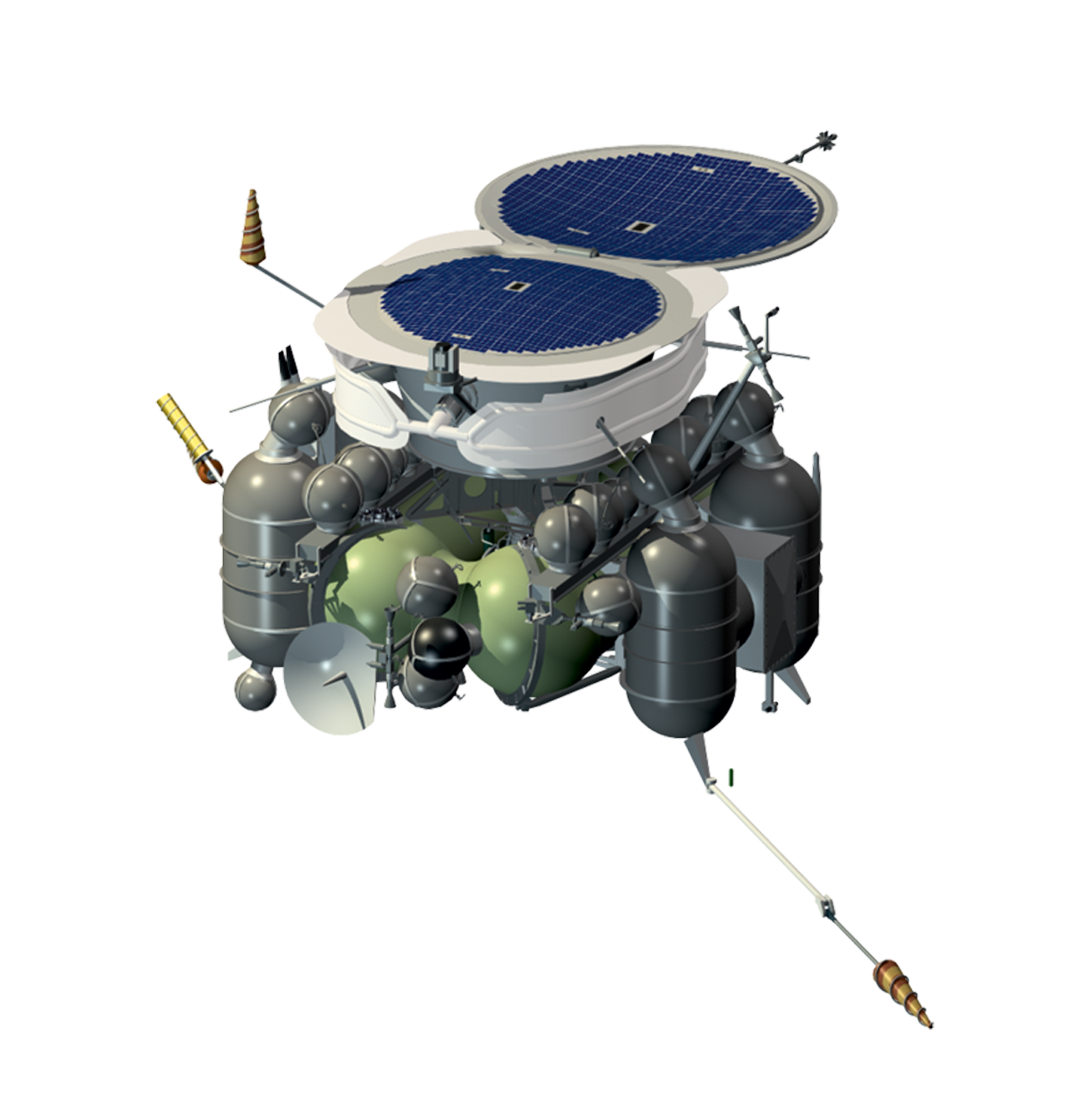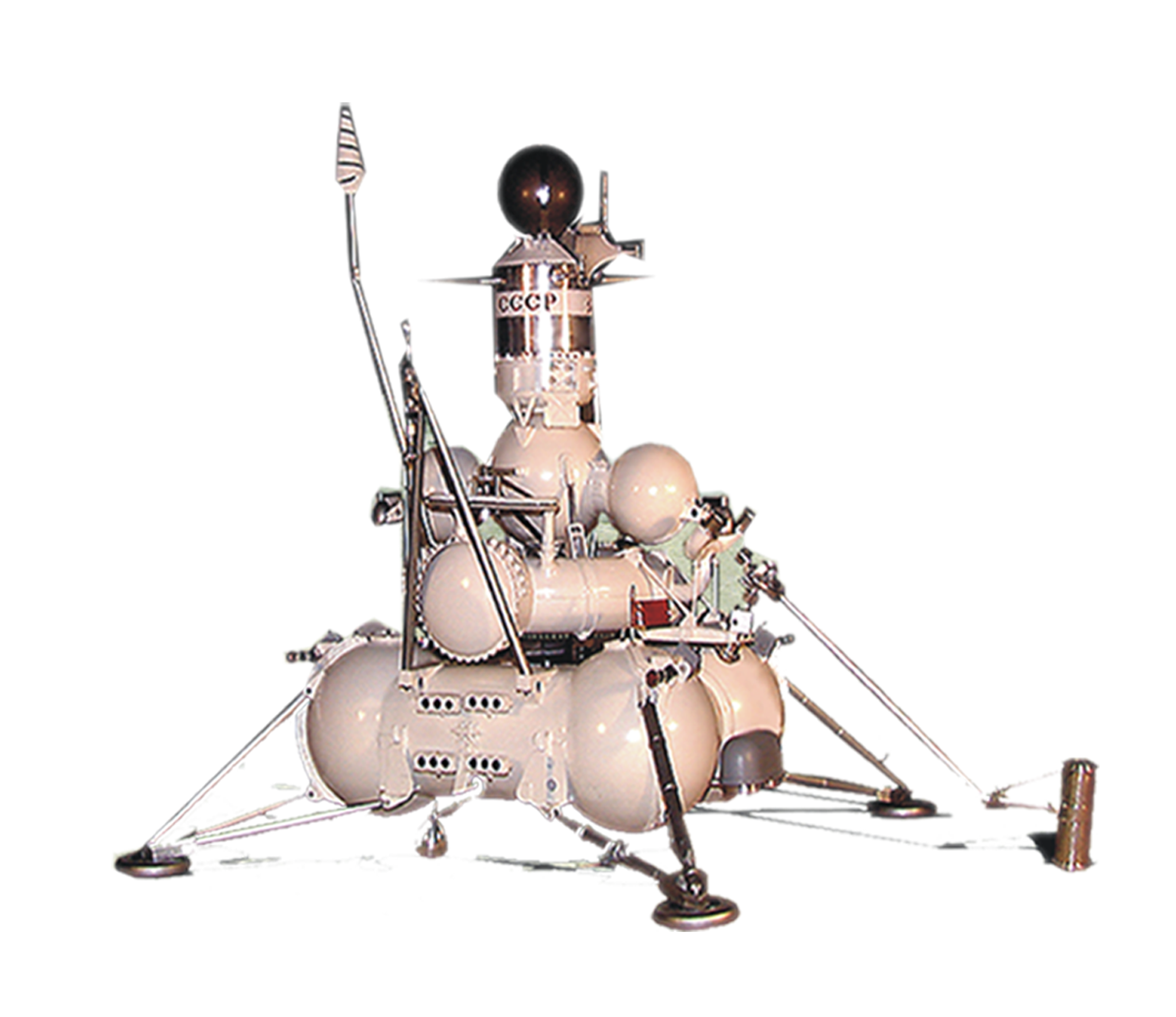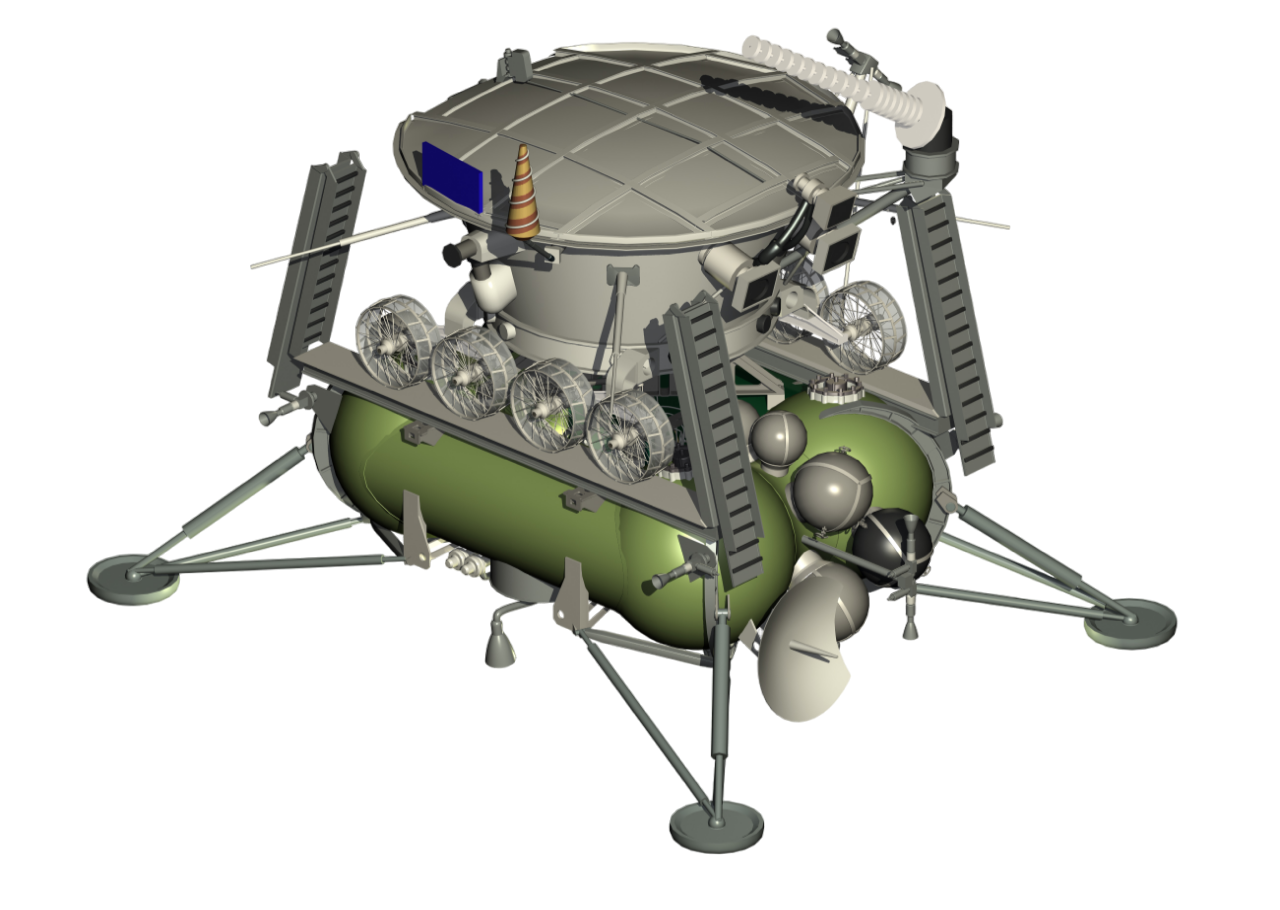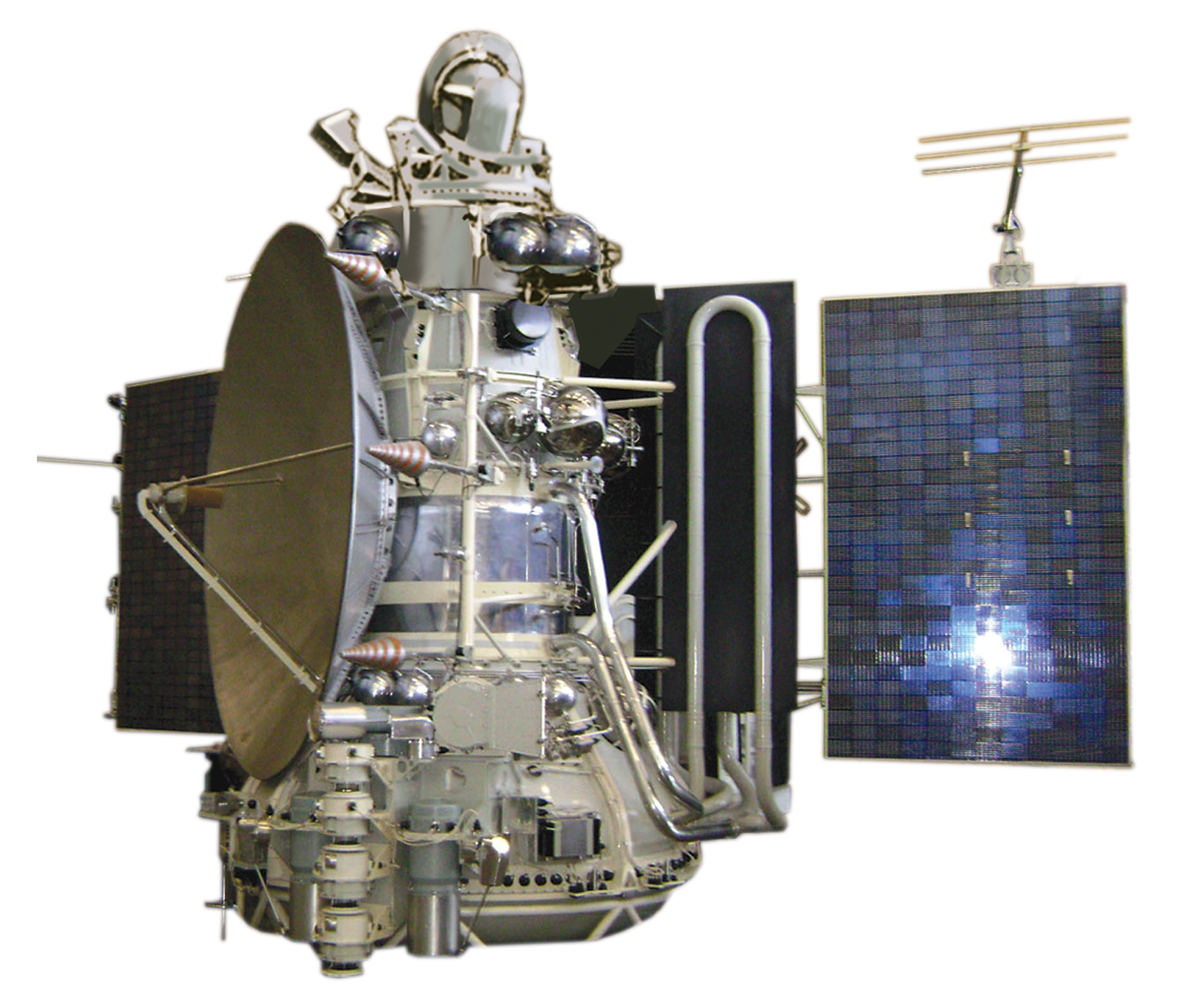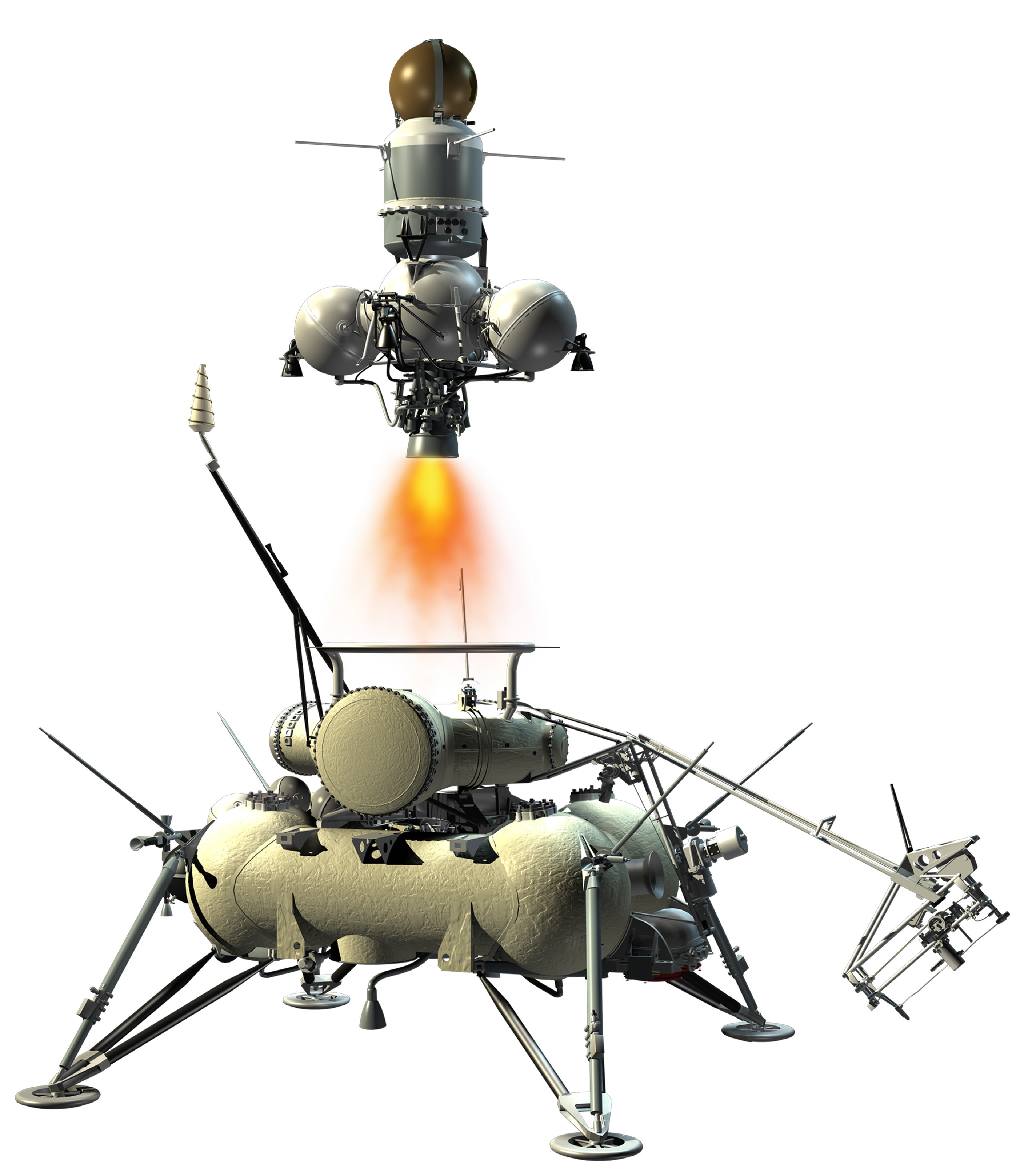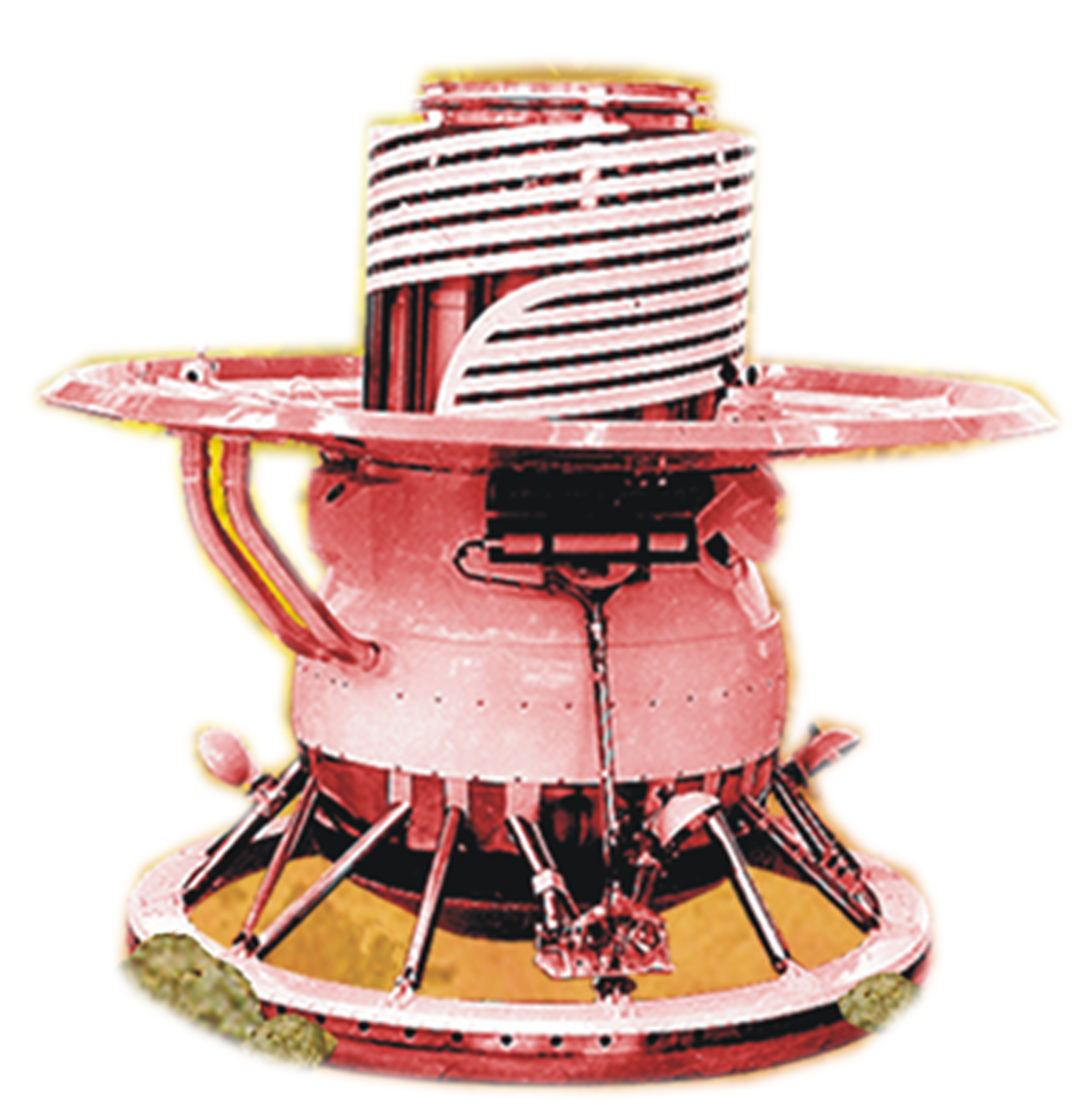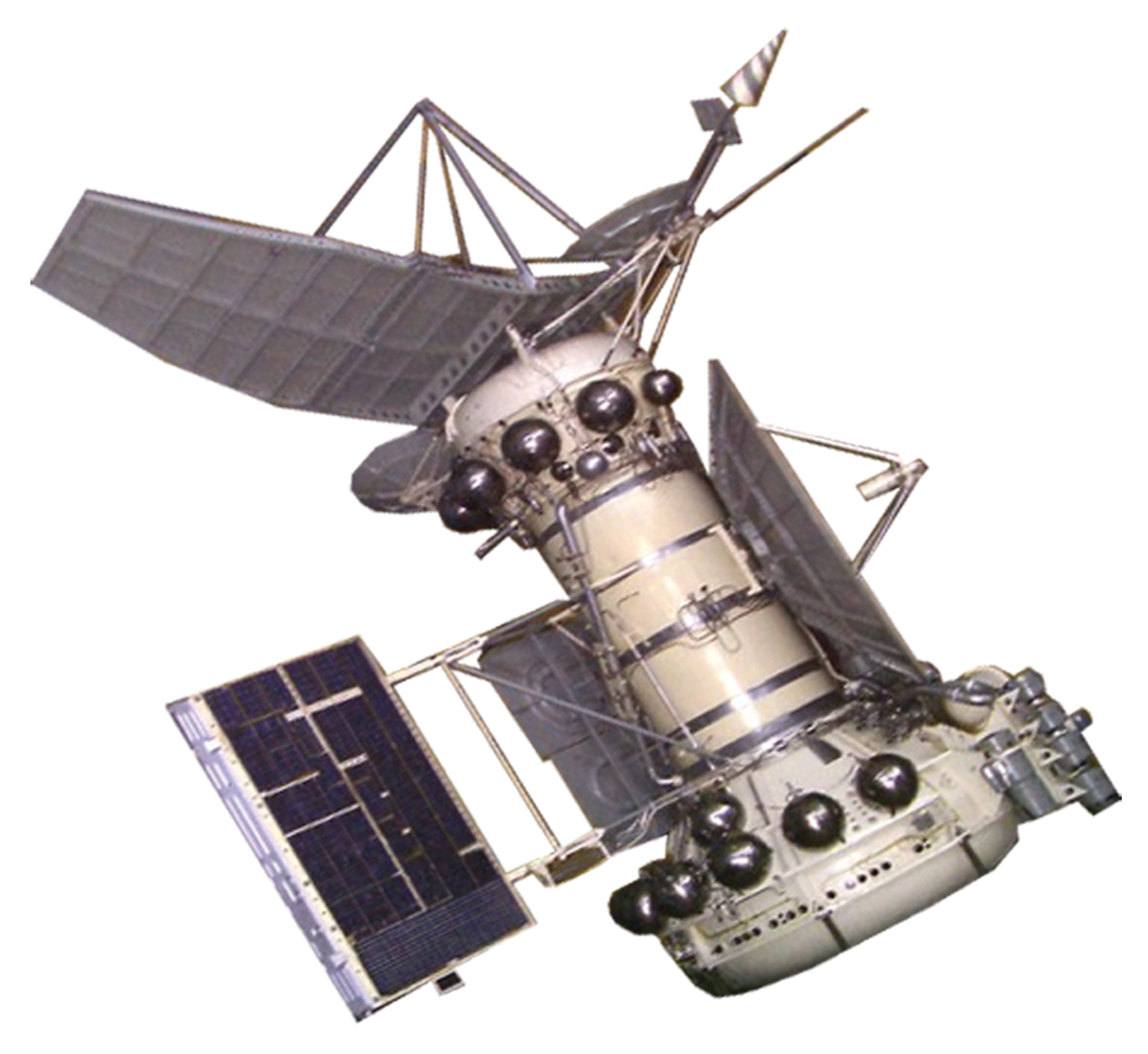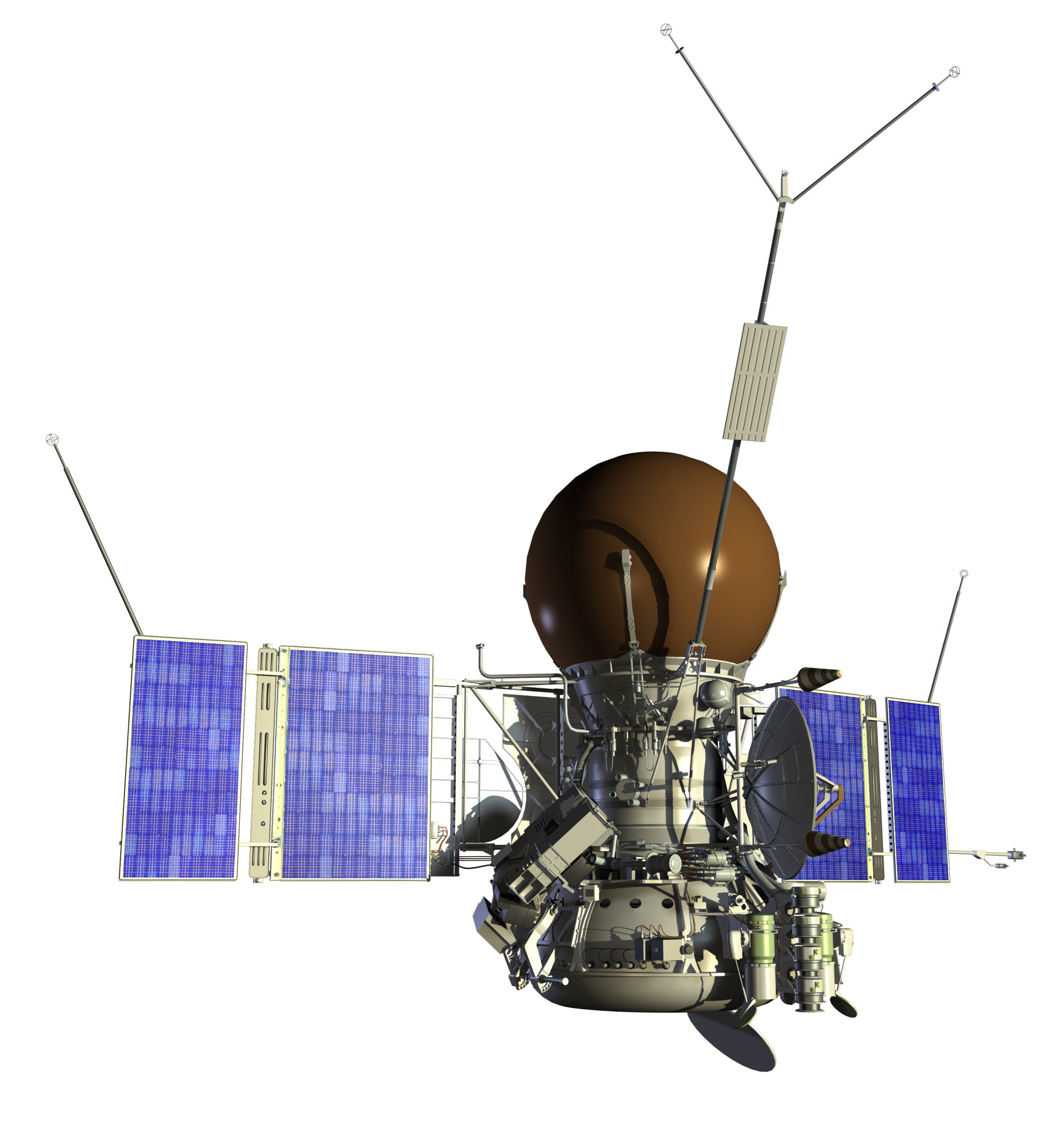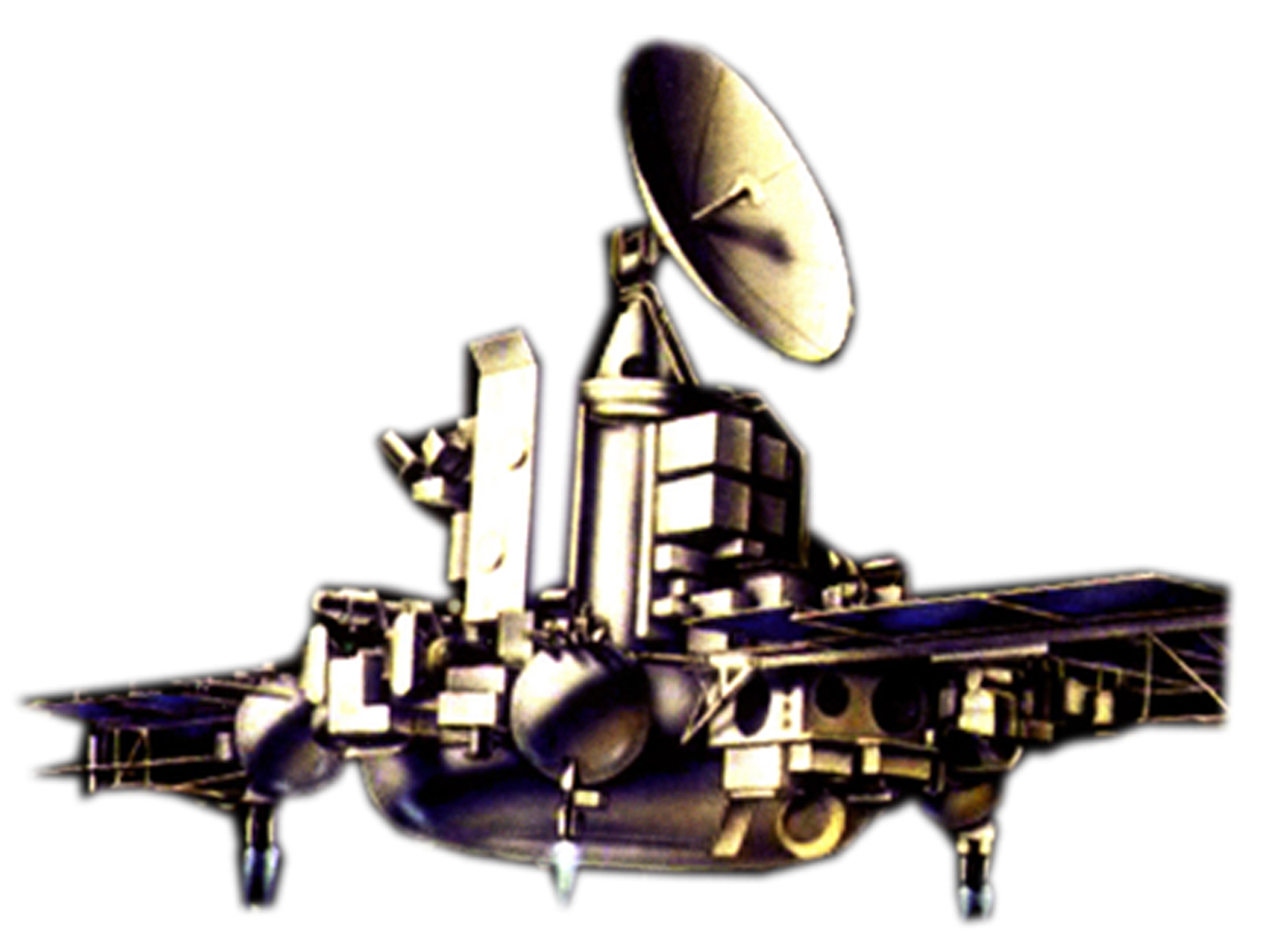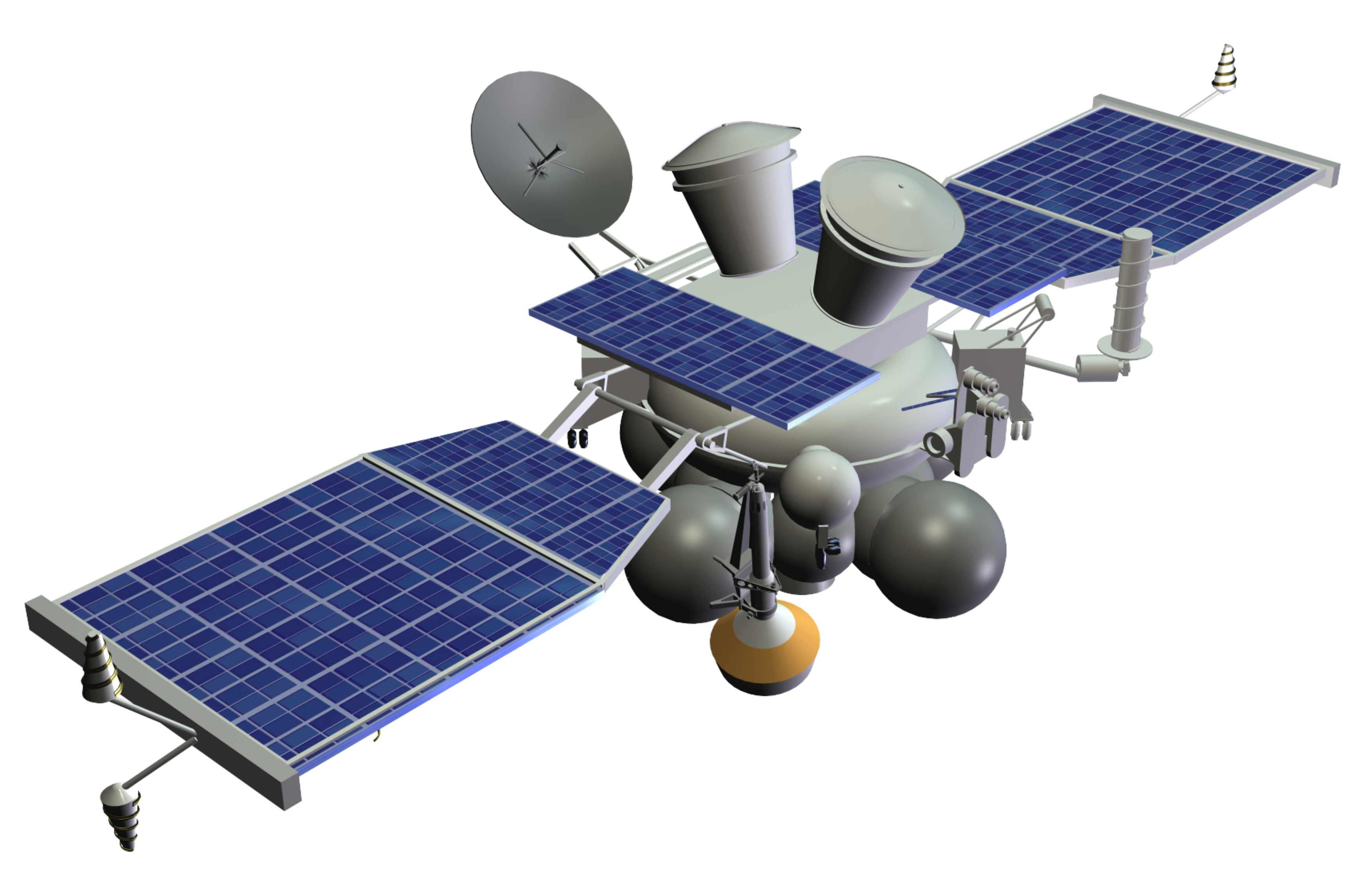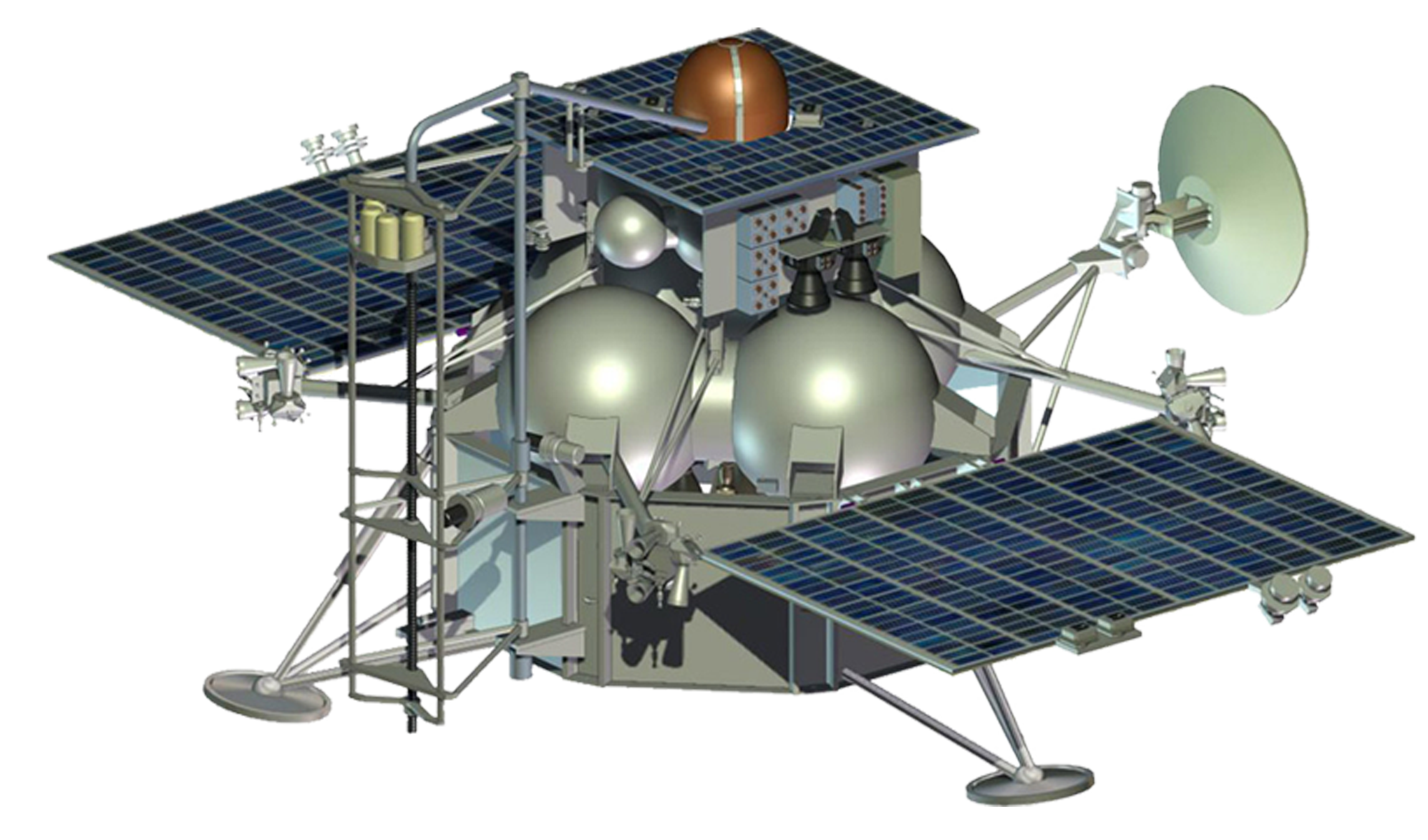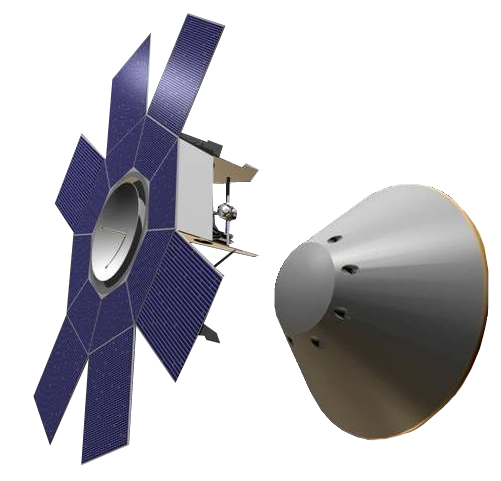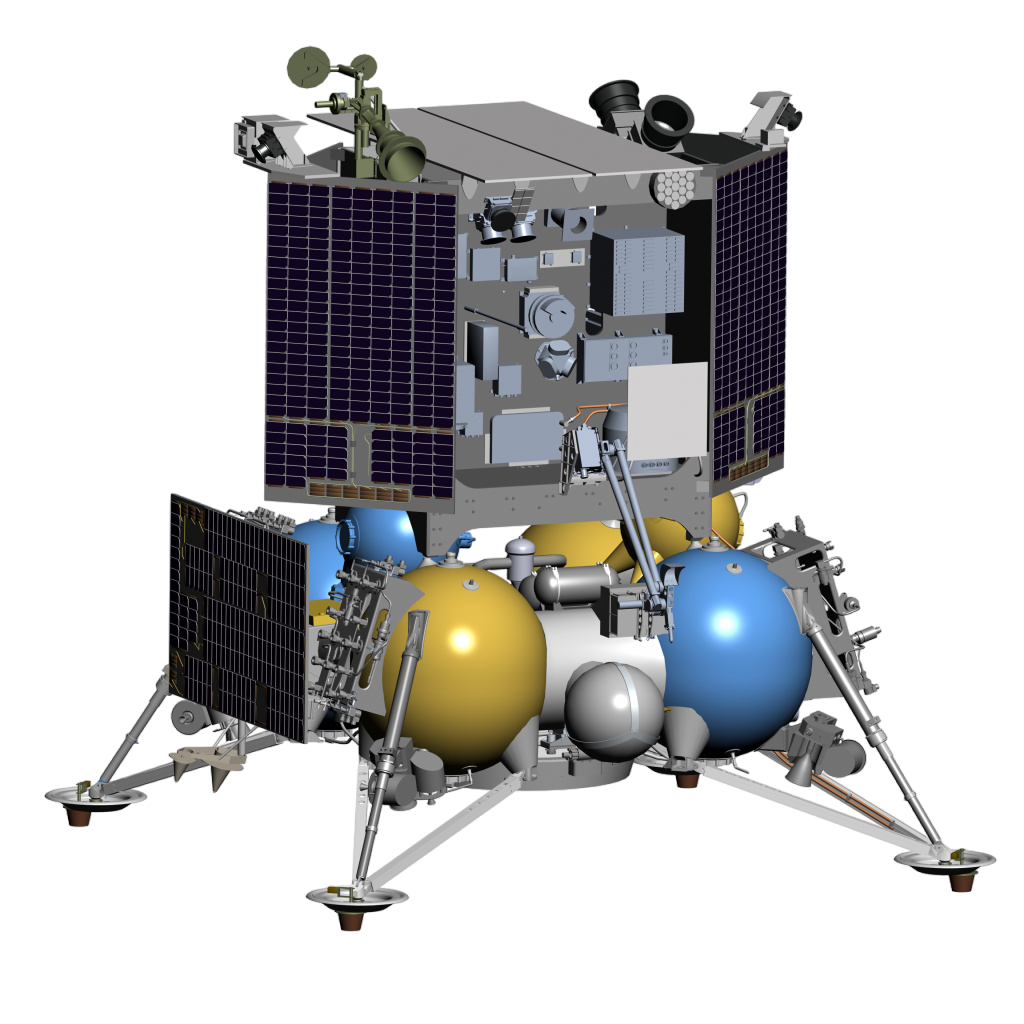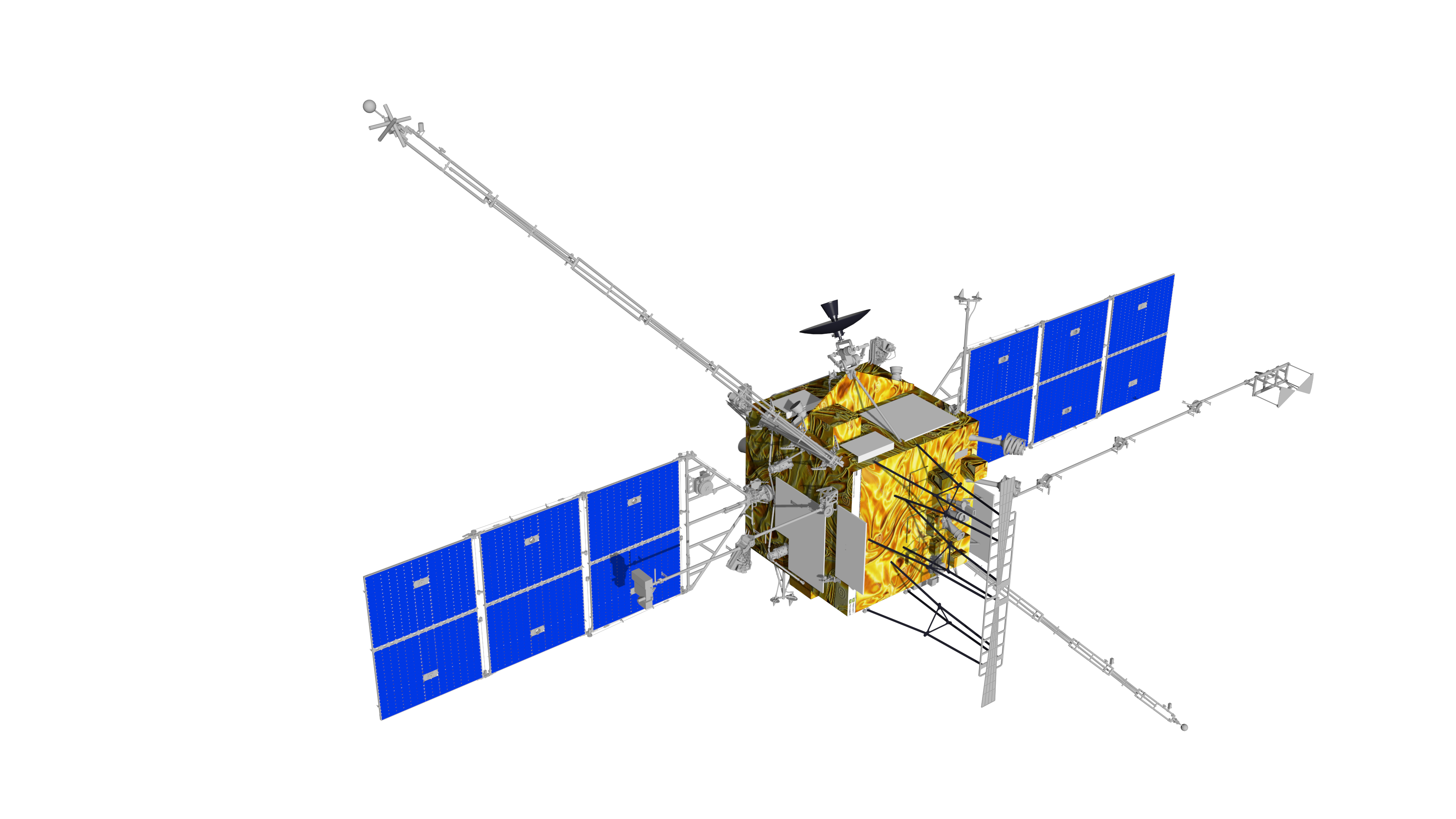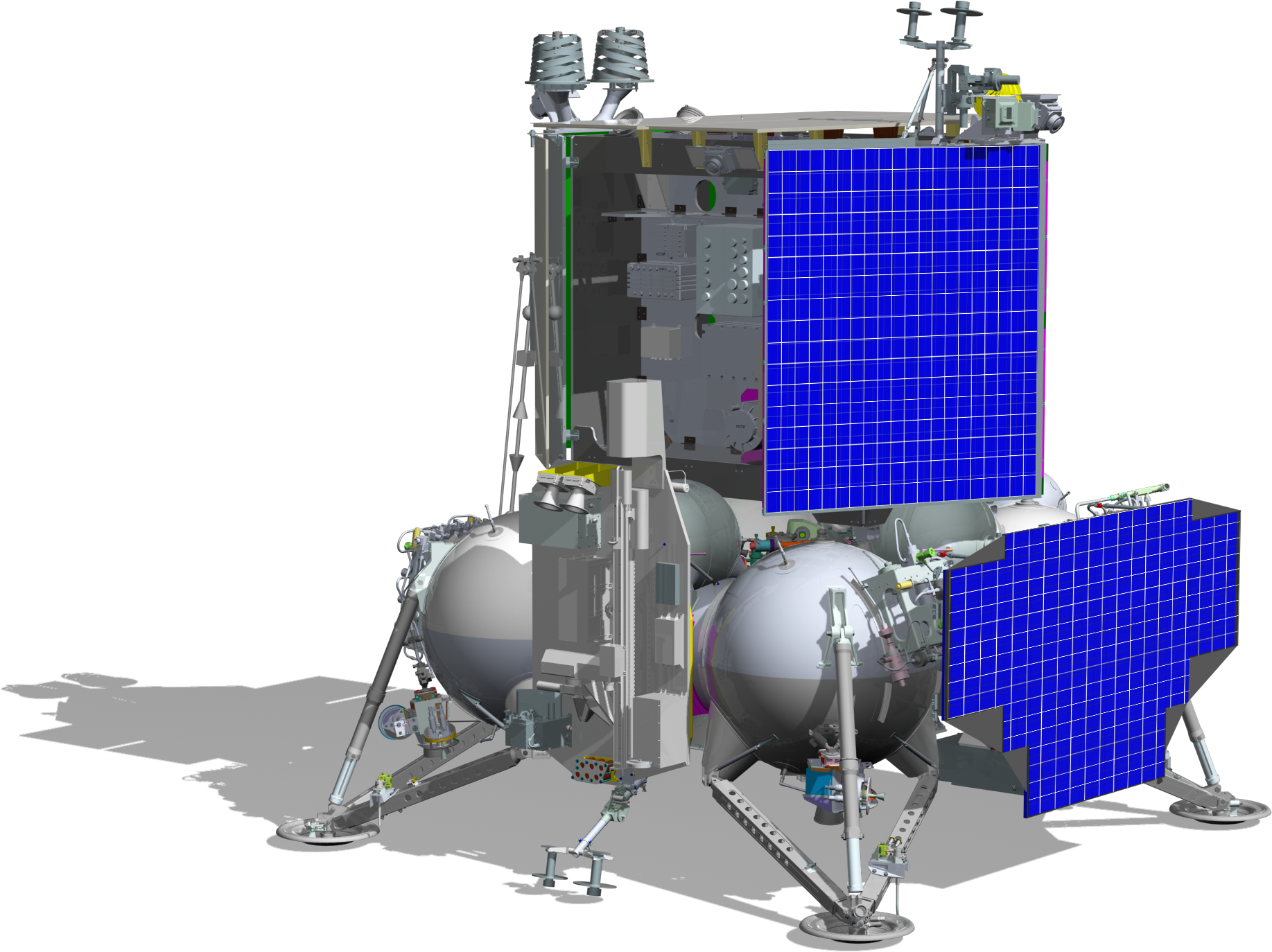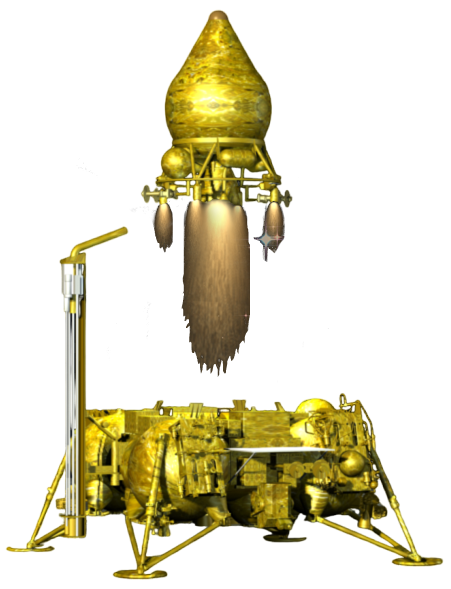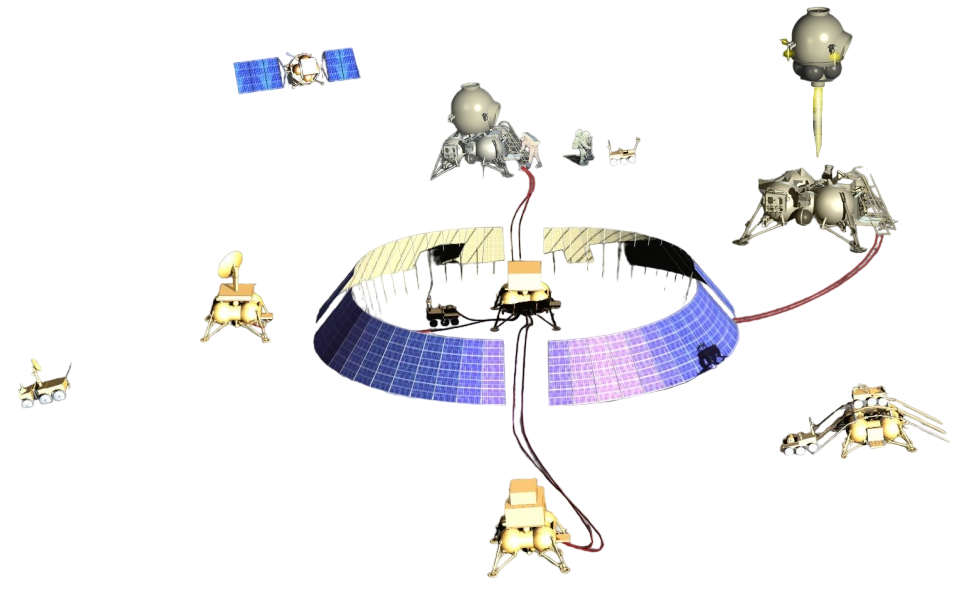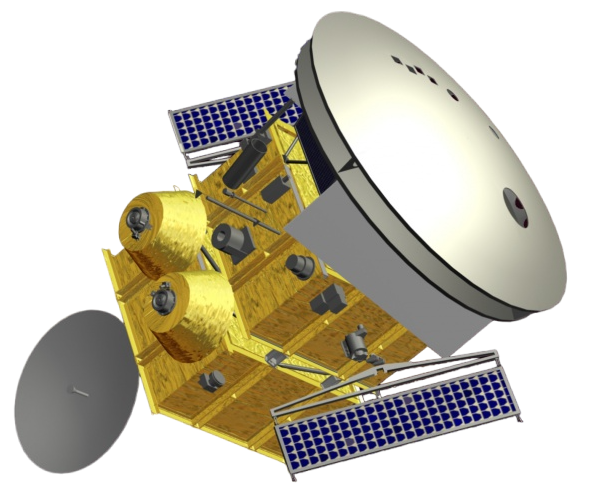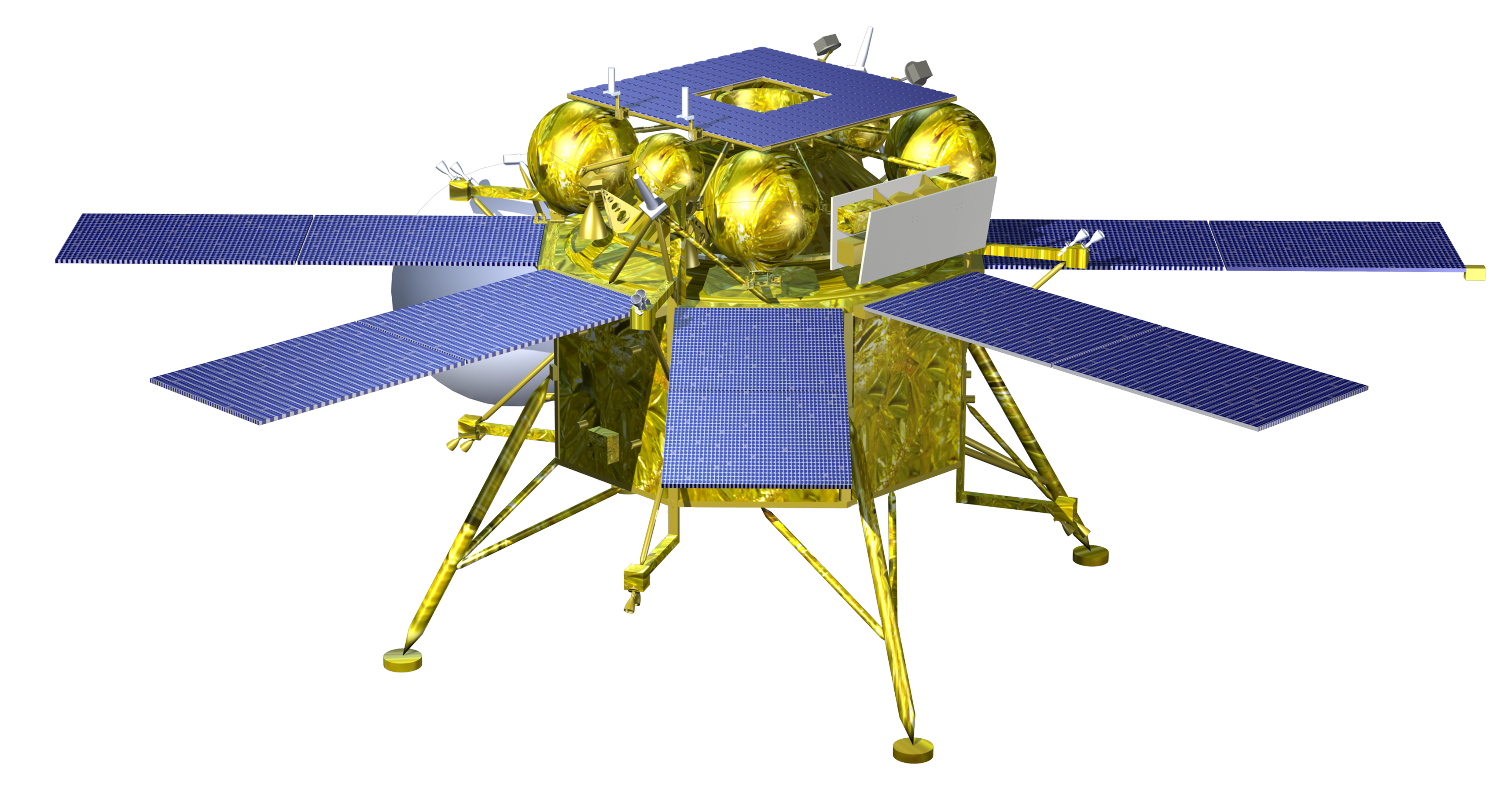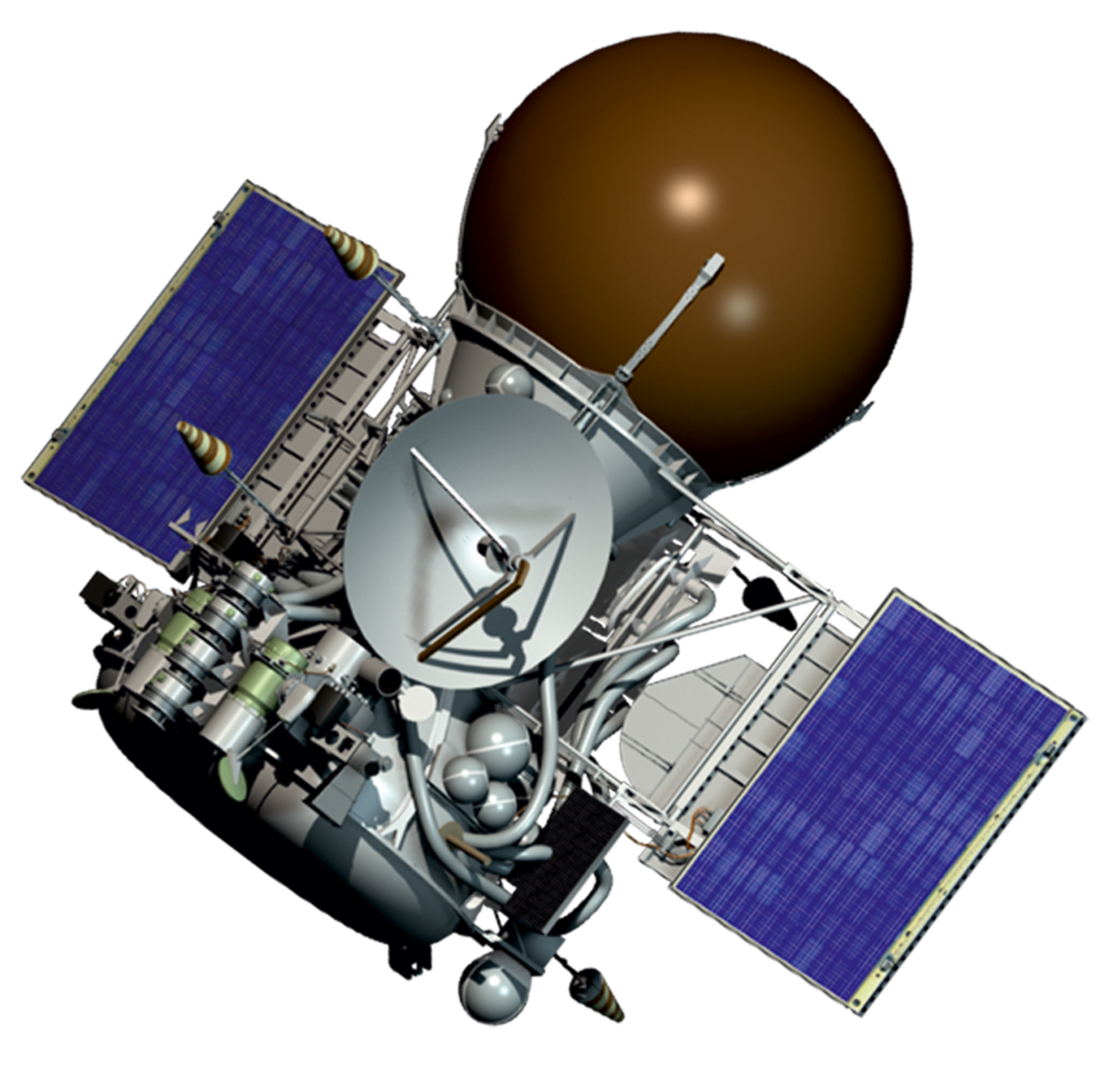
Characteristics
- Destination:
- planetary research
- Status:
- decommissioned
- Research Object:
- Venus
- Launch Date:
- 09/09/1978, 09/14/1978 (respectively)
- Spaceport:
- Baikonur
- Launchers:
- Proton-K LV
- Machine Weight:
- 4447.3 kgs, 4457.9 kgs (respectively)
- Working Orbit:
- towards Venus
Description
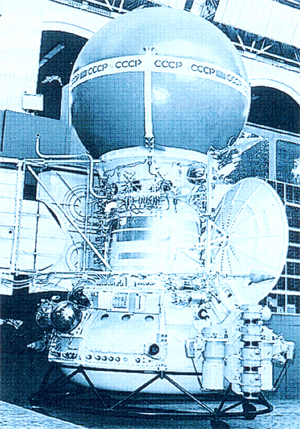 Due to the change in the ballistic conditions for the flight to Venus in 1978, a flight-landing scheme was
chosen. Until the descent module was dropped, the ballistic flight pattern of the 4V1 series SC completely
repeated the flight pattern of the SC of 4V series (Venera-9 and Venera-10).
Due to the change in the ballistic conditions for the flight to Venus in 1978, a flight-landing scheme was
chosen. Until the descent module was dropped, the ballistic flight pattern of the 4V1 series SC completely
repeated the flight pattern of the SC of 4V series (Venera-9 and Venera-10).
After passing the stage of injection into the Moon reference orbit and the further start towards Venus, the
SC of 4V1 series was transferred to the first half turn of the capture trajectory (the angular range of the
flight was less than 180 degrees).
Two corrections of the flight path were performed on the way to Venus: one - 20-40 days after the launch,
and the other - 10-20 days before approaching to Venus. The first one helped to correct the errors made
during the launch while the second one adjusted the altitude approach hyperbola periapsis and the orbit
inclination; the DM landing site was corrected too.
30 days before the separation of the orbital and descent modules, the charge of the lead-zinc battery of
the descent module is switched on. In addition, the descent module was cooled down, what makes it
possible to increase the duration of its operation on the planet's surface.;
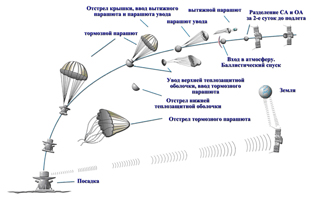 Two days before approaching the planet, the orbital and descent vehicles got separated, and the
11D425A engine was turned on to move the orbiter onto the flyby trajectory.
Two days before approaching the planet, the orbital and descent vehicles got separated, and the
11D425A engine was turned on to move the orbiter onto the flyby trajectory.
The duration of the flight was equal to 107 days.
The descent module entered the Venus atmosphere at a speed of 11.2 kms/s. After reaching the altitude
of 62-67 kms and reducing the longitudinal overloads to the value of nx = -2, a parachute system was
activated; a pilot chute with an area of 1.4 m2 and the DM upper hemisphere withdrawing parachute with
an area of 6 m2 were fired sequentially.
The descent of the withdrawing parachute lasted within 10-14 seconds, after what, the PTD released a
command (using the pyro devices) to separate the hemispheres of the heat-shielding shell. Being
affected by the aerodynamic forces, the upper hemisphere got separated from the DM together with a
parachute, while a braking parachute with an area of 24 m2 was activated. This event, started the
operation of the DM scientific payload and telemetry system.
On the lower ridge of the cloud layer at an altitude of 46-48 km, the braking parachute got separated, and
the further descent of the DM continued by using the aerodynamic brake flap. The descent stage on the
brake flap ended with a landing on the surface. Depending on the atmospheric pressure at the landing
site, the estimated landing speed of the device was 7.3-8.5 m/s, while the total descent time was 58-70
minutes.
Since the three-dome main parachute with an area of 180 m2 was excluded from the composition of the parachute system, the total time for the descent of the vehicle in the atmosphere decreased by 15 minutes compared to Venera-9, 10.
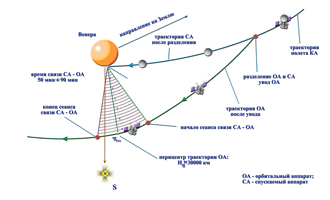
Following the soft landing on the surface, 32 seconds after the touchdown, the simultaneous operation of the soil sampling device and telephotometers began. The transmission of a TV image, alternating with the transmissions of the telemetric information and the digital array containing the results of the soil analysis, continued until the radio connection was lost.
Upon the completion of expedition main task - the study of Venus - the DM continued to fly in a heliocentric orbit, transmitting the scientific data about interplanetary space to Earth.
